Gallery: The history of Australia

Cable trams, King Street. Sydney’s first cable tramway was established in North Sydney in 1893. A second line dated from 1898 and ran from Darling Harbour, up King Street and St James Road; College, Boomerang and William streets; then Bayswater Road and New South Head Road to Ocean Street, Edgecliff.
The powerhouse for the trams was located at Rushcutters Bay. By 1905 the entire line had been electrified as part of Sydney’s burgeoning tramway system, destined to become one of the most extensive publicly owned services in the world. Note the complete absence of female workers, or even shoppers, among the crowd.

These photos and more can be found in the Australian Geographic book, A Nation in the Making .
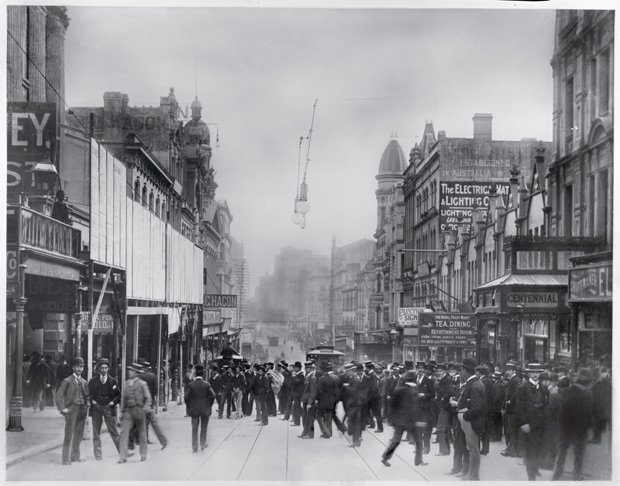
Girls skipping, early 1900s. The girls were probably part of the New South Wales annual children’s demonstration held at the Sydney Cricket Ground.
These photos and more can be found in the Australian Geographic book, A Nation in the Making .
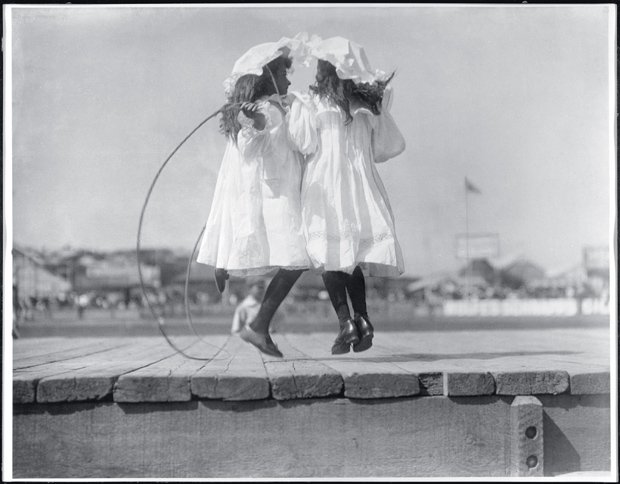
Horse-drawn fire appliances outside the city fire station in Castlereagh Street. The building was completed in 1887. Colonial architect James Barnet designed the facade of Castlereagh Street in a classical-revival style.
These photos and more can be found in the Australian Geographic book, A Nation in the Making .
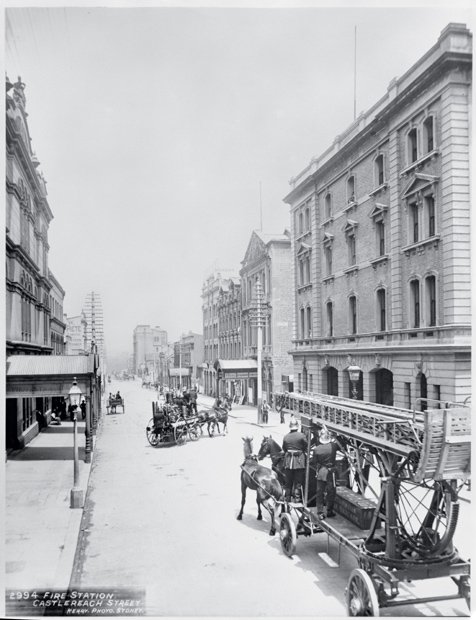
Teamsters stop for ‘smoko’. By the late 19th century roads were improving and horse teams were supplanting bullocks as the main mode of heavy haulage. Horses could travelmuch faster than a bullock team’s top speed of only 3mph (about 5km/h).
These photos and more can be found in the Australian Geographic book, A Nation in the Making .
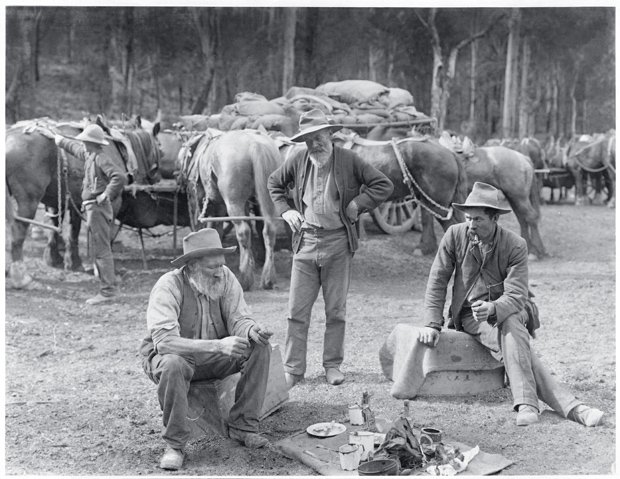
Amid the hustle and bustle of commuter ferry traffic, the agrarian and trading wealth of Australia was nowhere more evident than in the buildings surrounding early 20th century Circular Quay. In the foreground is the imposing Australian Steam Navigation Company building, constructed in 1884 in a rare Anglo-Dutch style.
Side by side on the southern shores stand the massive Farmers and Graziers wool store originally built by Mort and Co. in the 1860s, and the much-enlarged Customs House showing early 1900s additions designed by the New South Wales Colonial Architect, Walter Liberty Vernon.
These photos and more can be found in the Australian Geographic book, A Nation in the Making .
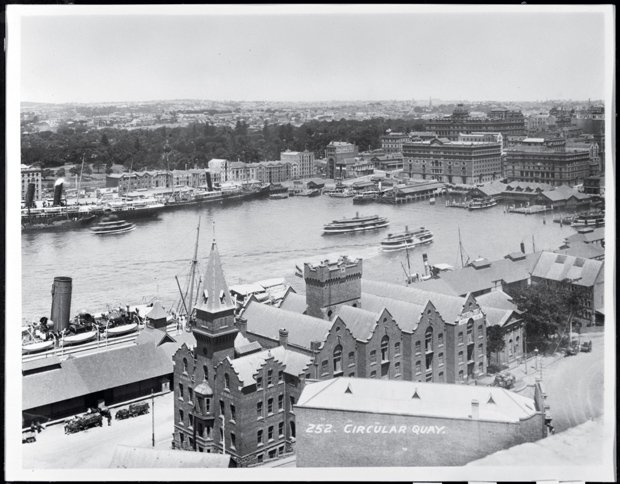
Frank Senior, sculler. In the late 1800s and early 1900s, professional rowing and sculling were extremely popular spectator sports. Crowds in their tens of thousands lined the courses and large sums were gambled on the results. Senior would have been a celebrity sports star of his day.
These photos and more can be found in the Australian Geographic book, A Nation in the Making .
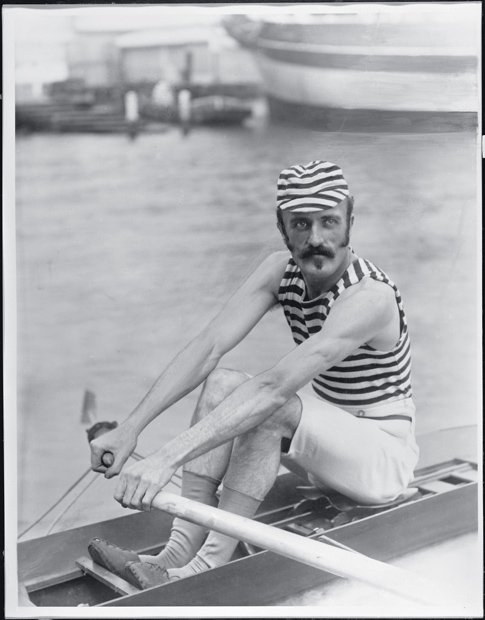
A view of heavy traffic on the Pyrmont Bridge, probably taken from the operable span’s control tower. The Corn Exchange at the intersection of Sussex and Market streets can be seen in the distance immediately past the bridge.
Apart from the numerous horse-drawn commercial vehicles, hansom cabs, and carriages, a solitary worker can be seen at the extreme right of the photograph sweeping the gutter. Nicknamed ‘sparrow starvers’, these council-employed boys collected horse manure, which was then sold as garden fertiliser.
These photos and more can be found in the Australian Geographic book, A Nation in the Making .
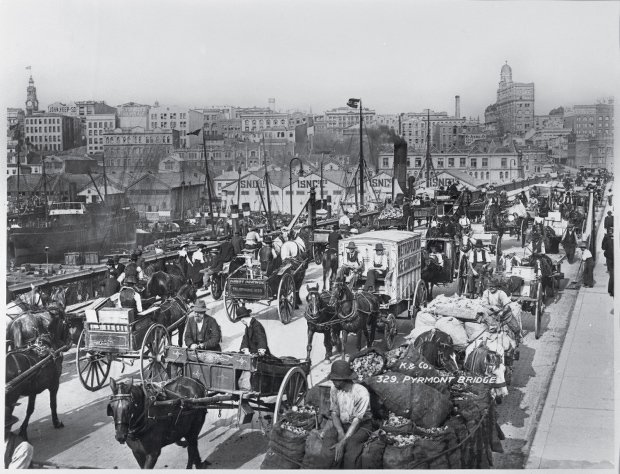
Lobster fishermen attending their wicker pots at an unnamed port, western Victoria, ca. 1890s. Small rock-lobster fisheries developed along the Victorian and South Australian coasts in the late 1800s.
These photos and more can be found in the Australian Geographic book, A Nation in the Making . how to get the book for free.
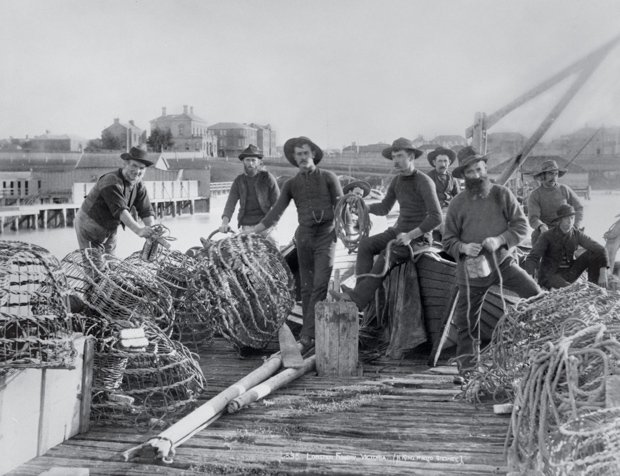
The Queen Victoria Building, ca. 1905-17. Designed by the Sydney City Architect, George McRae, and built on the site of the original central markets, the grand Romanesque-style shopping arcade that replaced the markets gave only a passing nod to the site’s previous function.
Fruit and vegetable selling was confined to the basement, with most of the three-storeyed building taken up by 200 shops, all under the one roof. The building opened in 1898, but low tenancy rates and poor rental returns forced the council to undertake major external and internal alterations in 1917.
These photos and more can be found in the Australian Geographic book, A Nation in the Making .
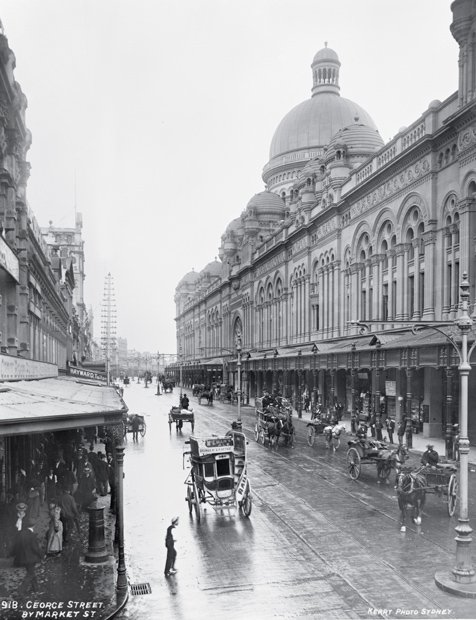
The Esplanade, Coogee, early 1900s. Coogee was connected by electric tram to the city in 1902, guaranteeing the suburb’s success as a seaside resort. In turn, the rise in popularity of ‘surf bathing’ led to the formation of the Coogee Surf Lifesaving Club in 1907. A clubhouse was constructed in 1910.
Note the public dressing sheds below the sea wall and also the relaxed attitude towards gender relationships – the bane of many an observer of Colonial life – evident in the girls in the middle foreground.
These photos and more can be found in the Australian Geographic book, A Nation in the Making .
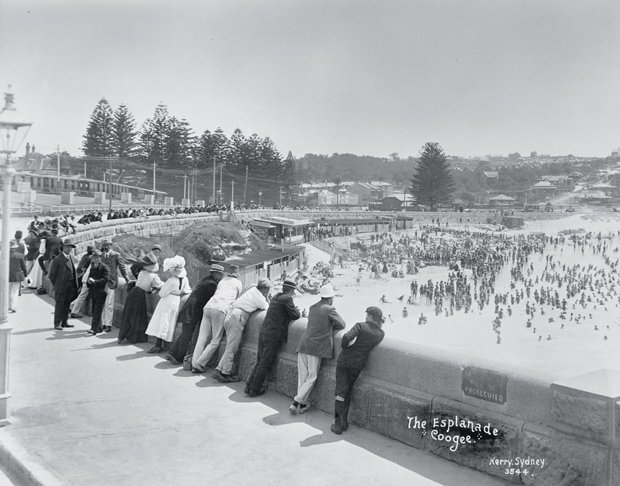
Chain-driven adult tricycles first appeared in the 1870s, and the 1880s saw the invention of the rear-steering tricycle. The one pictured has a single chain drive, which proved unstable. Around 1885, bicycle-like tricycles – with two chain-driven rear wheels for stability and a single front wheel for steering – became popular.
These photos and more can be found in the Australian Geographic book, A Nation in the Making .
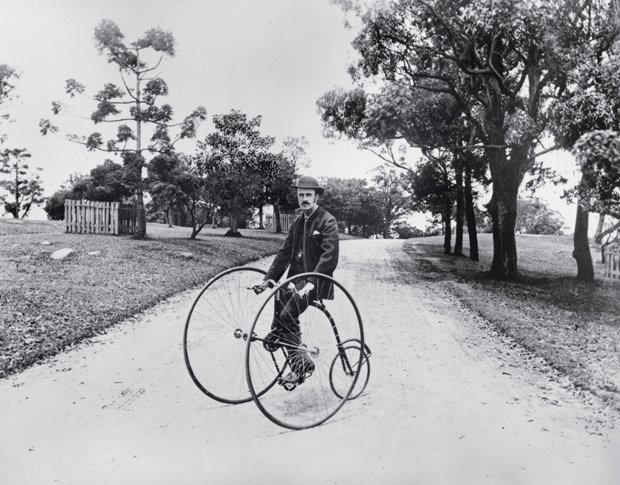
Ladies skiing, Snowy Mountains, ca. 1900. Women skied at Kiandra from early in the sport’s history. The South Australian Register for 12 March, 1900 reported on the annual “snow shoe races” of the Australian Alpine Club at Kiandra, observing that “all the men, women, and children use the skis”. Maggie, a maid at the Kiandra Hotel, was the local women’s champion. Note the use at the time of the single ski pole.
These photos and more can be found in the Australian Geographic book, A Nation in the Making .
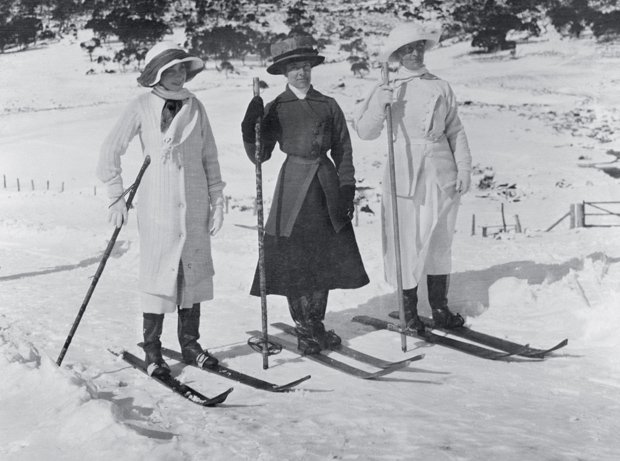
Donkey rides, Wollongong. Fairground amusements were common attractions on the more popular New South Wales beaches. An 1895 notice in the Sydney Morning Herald for Fern Bay, just north of Newcastle, promised “juvenile swings, donkey rides, a merry-go-round … and Messrs. Lovelock and Dent’s Juvenile Burlesque Company”.
These photos and more can be found in the Australian Geographic book, A Nation in the Making .
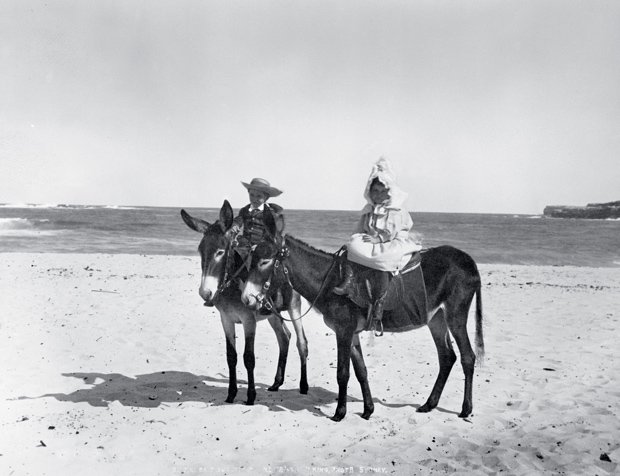
Sydney Corn Exchange, corner of Sussex and Market streets. Designed by George McRae, the City of Sydney Architect who was later responsible for the Queen Victoria Building, the Corn Exchange was built in 1887 as a temporary fruit market. It was soon converted to offices and from 1900 served for a time as the city’s grain-trading centre.
The Corn Exchange is the oldest surviving market building in Sydney. The warehouse of timber merchant and politician Alexander Kethel, an enlightened advocate of forest conservation, can be seen at left in the background.
These photos and more can be found in the Australian Geographic book, A Nation in the Making .
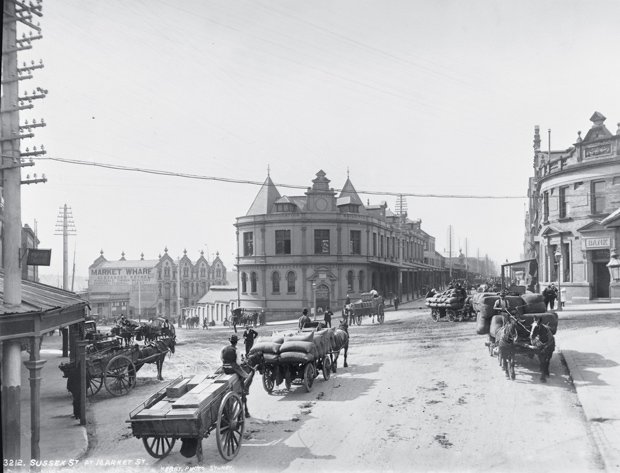
HMS Wolverine at anchor, seen from Mrs Macquaries Point, Sydney Harbour, ca. 1881-87. The fourth Royal Navy ship to bear the name Wolverine, this wooden-screw corvette was launched in 1863 and sailed to Australia in 1881, where it was flagship for Commodore John C. Wilson’s Australia Station. It was later decommissioned and converted to a mercantile barque.
These photos and more can be found in the Australian Geographic book, A Nation in the Making .
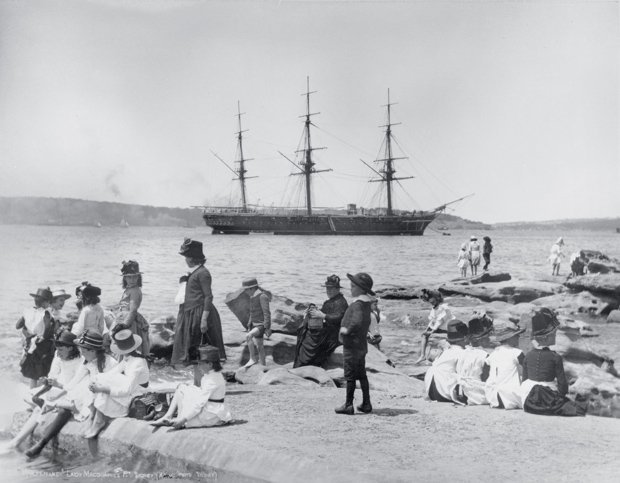
Sydney from Pyrmont. For the first half century of European occupation in Sydney there was little change to the landscape. A slipway was built in the 1850s and Pyrmont ‘yellowblock’ – some of the best sandstone in the world – was quarried and carted to the nearby burgeoning city.
By the latter years of the century much of the colony’s trade was passing through Darling Harbour – wheat, timber and coal arriving, and wool and manufactured goods departing from its expansive docks.
These photos and more can be found in the Australian Geographic book, A Nation in the Making .
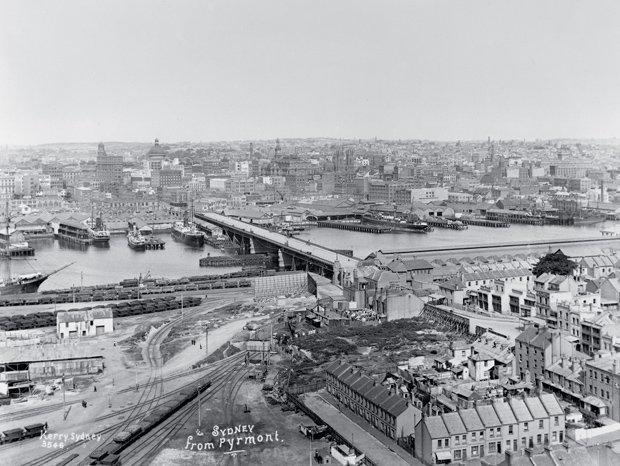
Blades and brawn. Skilled axemen prepare to fell a giant gum tree with the power of the axe alone. Great skill was required on the part of the axemen balancing several metres above the ground. Felled trees were then cut into smaller sections with crosscut saws ready to be hauled away by bullock teams.
These photos and more can be found in the Australian Geographic book, A Nation in the Making .
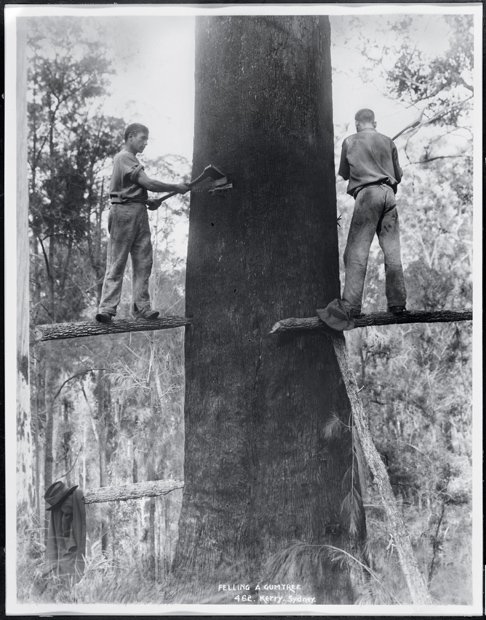
On Saturday 26 December 1908, American boxer Jack Johnson defeated the Canadian title-holder, Tommy Burns, for the heavyweight championship of the world. The bout took place at the Sydney Stadium, Rushcutters Bay, before a crowd of 20,000 fans.
Many more crowded rooftops and any available vantage point to get a glimpse of the fight. Due to the pummelling that Tommy Burns was taking, police stopped the contest in the 14th round. Much note was made in the press of the fact that Johnson was a ‘Negro’.
These photos and more can be found in the Australian Geographic book, A Nation in the Making .
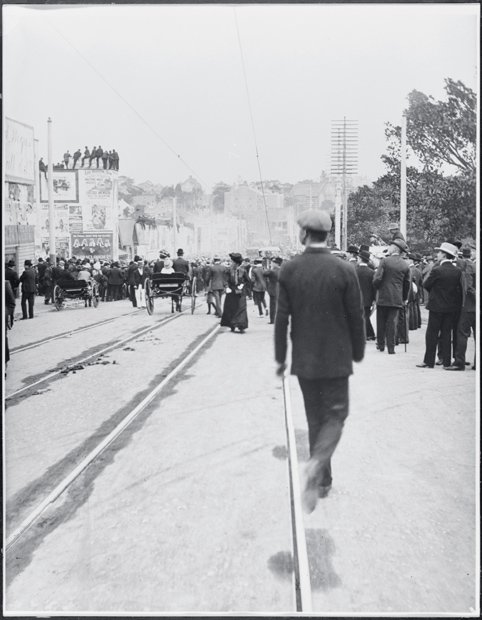
The Belalie bore. Sunk to a depth of about 200m, the bore – north of Bourke near the New South Wales-Queensland border – gushed about 2.2 million litres a day. The district’s bores had a profound affect: the Sydney Morning Herald remarked in March 1893 that sheep numbers had increased by more than 1.5 million.
These photos and more can be found in the Australian Geographic book, A Nation in the Making .
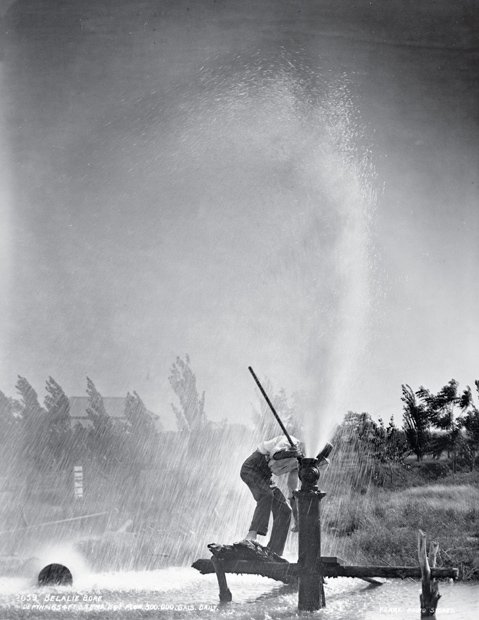
Shearing board, Burrawang station. Burrawang began in 1836 as a squatters’ run and by 1866 it covered more than 2000sq.km between Forbes and Condobolin in central-western New South Wales.
The station became legendary for its record wool clip (5000 bales in 1884) and its enormous shearing shed, which employed more than 250 men. The station was the scene of a labour dispute during the depression of 1893.
These photos and more can be found in the Australian Geographic book, A Nation in the Making .
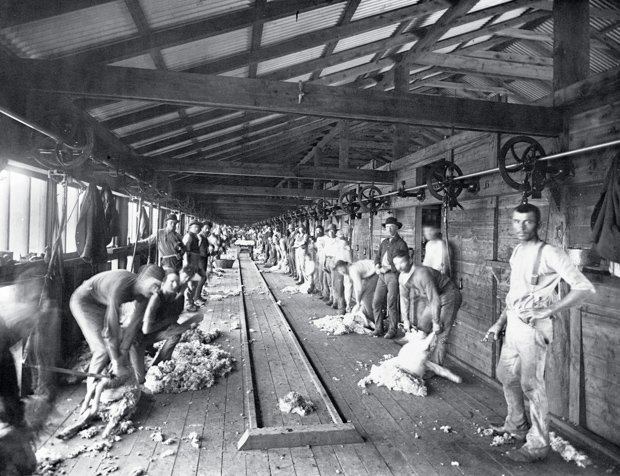
Sydney Harbour from the grounds of the Royal Sydney Yacht Squadron, season opening day, 1903. The Squadron was founded in 1862 as the Australian Yacht Club. A year later it received the patronage of the Prince of Wales and became known as the Royal Sydney Yacht Squadron. In 1902 the club leased a stone cottage and slipway on Wudyong Point, Kirribilli, its home to this day.
These photos and more can be found in the Australian Geographic book, A Nation in the Making .
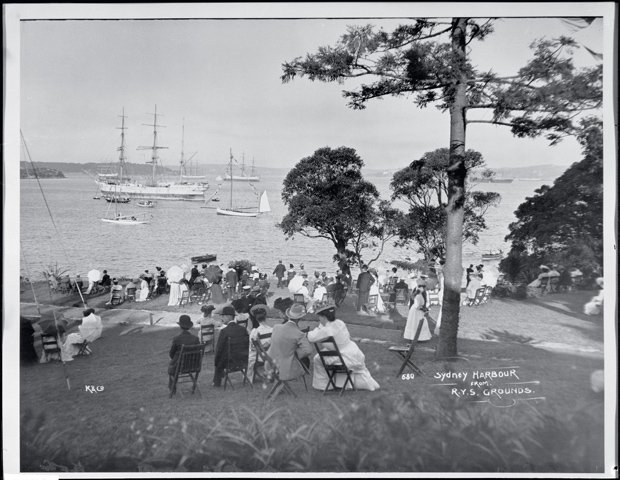
The Fourth Test, England versus Australia, third day’s play, 4 February 1895. Australia made a first-innings score of 284 runs. England replied with only 65 and was forced to follow on, scoring just 72 in its second innings. The match was the 43rd played between the two sides.
These photos and more can be found in the Australian Geographic book, A Nation in the Making .
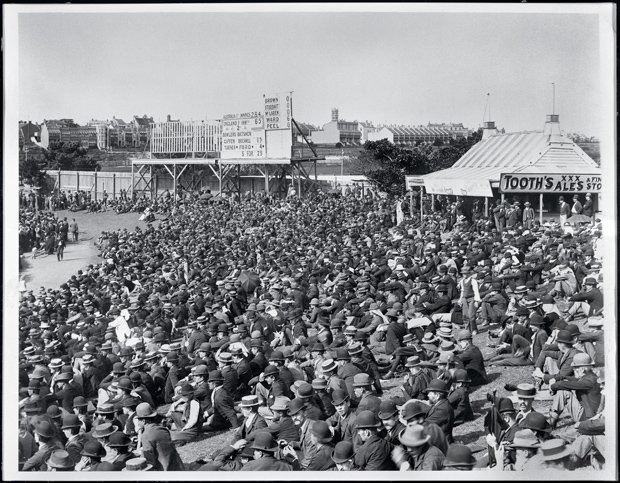
Sea bathing at Coogee Beach. In 1902 Randwick Council approved a by-law making it “lawful for all persons, whether male or female, to bathe in the sea at all times and at all hours of the day…provided that such persons shall be clothed or covered from the neck and shoulders to the knees with a suitable bathing dress or costume”, as reported in the Sydney Morning Herald for 4 December 1902. It seems the boys in this photograph had not read the newspaper.
These photos and more can be found in the Australian Geographic book, A Nation in the Making .
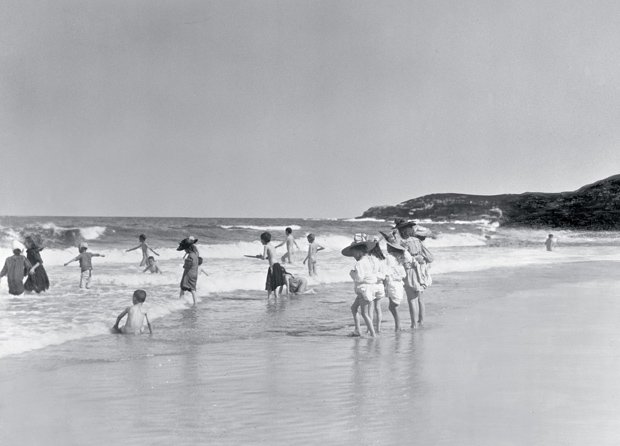
Up until the demise of Darling Harbour, the produce trade of Sydney was concentrated in Sussex Street.
Grafton Wharf, as the name implies, was where ships from the New South Wales north coast, the Clarence and Richmond River Steam Navigation Company berthed.
Pictured is No. 1 Sussex Street at Grafton Wharf, designed by prominent architect William Wardell, who also designed St Mary’s Cathedral and the Australian Steam Navigation Company Building in Hickson Road, The Rocks.
These photos and more can be found in the Australian Geographic book, A Nation in the Making .
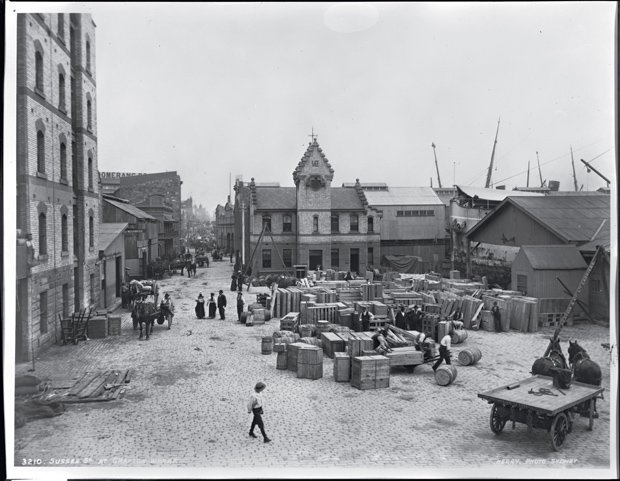
Building a wheatstack: the end of an era. Before the advent of stripping combine harvesters, wheat was first cut and placed in stooks (seen in the middle distance) to dry. It was then piled in huge stacks pending the arrival of a contractor with steam-driven stationary threshing machinery.
The 1880s Australian development of combine harvesters by H.V. McKay (among several inventors) allowed the grain to be cut, threshed, cleaned and bagged without interruption. A combine, a team of horses and just two men were then all that were required to efficiently harvest up to 40ha per day.
These photos and more can be found in the Australian Geographic book, A Nation in the Making .
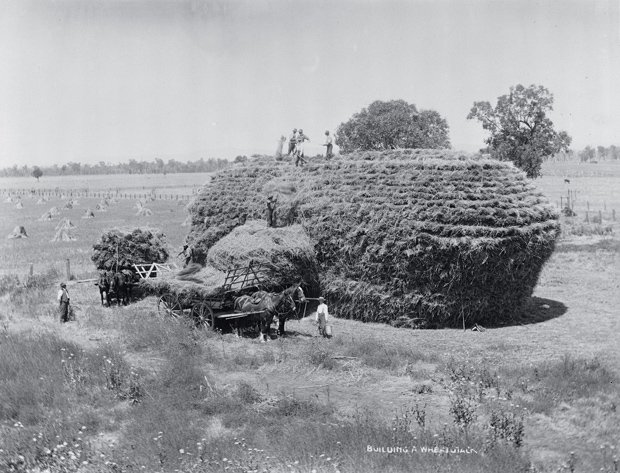
On the wallaby track. Henry Lawson’s poem On the Wallaby Track alludes to the camaraderie found among the hardships for the swagman on the road:
Though the way of the swagman is mostly up-hill,
There are joys to be found on the wallaby still.
When the day has gone by with its tramp or its toil,
And your camp-fire you light, and your billy you boil,
There is comfort and peace in the bowl of your clay
Or the yarn of a mate who is tramping that way.
These photos and more can be found in the Australian Geographic book, A Nation in the Making .
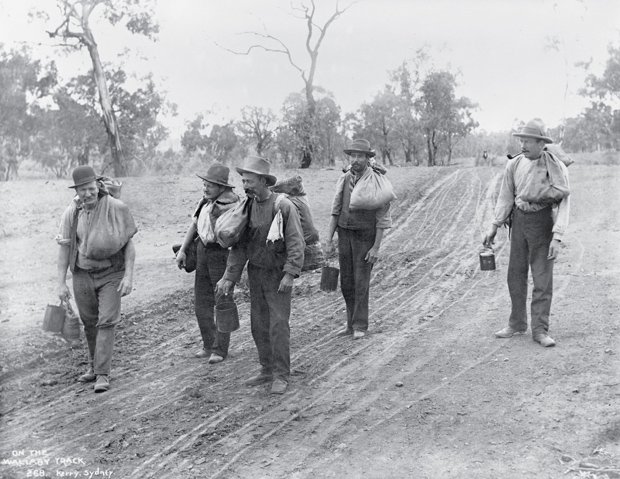
Cumberland Street, The Rocks. During the course of the 19th century the social diversity of the original close settlement around the port of Sydney was lost.
The affluent residents vacated their large houses on the ridge for the growing suburbs and The Rocks became an area of seamen and immigrants, the working class and the poor. Many outsiders considered the area still tainted by the convict stain.
These photos and more can be found in the Australian Geographic book, A Nation in the Making .

Home Topics History & Culture Gallery: The history of Australia


